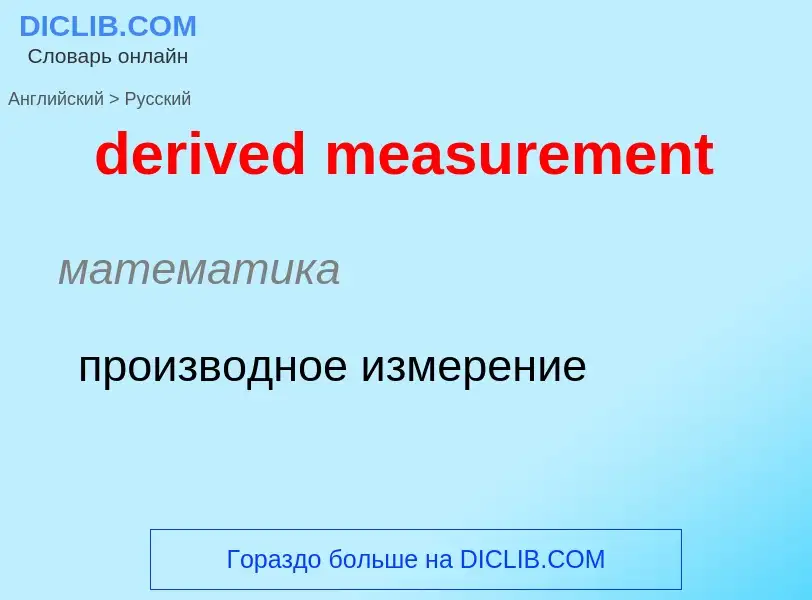Translation and analysis of words by ChatGPT artificial intelligence
On this page you can get a detailed analysis of a word or phrase, produced by the best artificial intelligence technology to date:
- how the word is used
- frequency of use
- it is used more often in oral or written speech
- word translation options
- usage examples (several phrases with translation)
- etymology
derived measurement - translation to russian
математика
производное измерение
математика
производная группа
коммутант
Definition
Wikipedia
In mathematics, the derived category D(A) of an abelian category A is a construction of homological algebra introduced to refine and in a certain sense to simplify the theory of derived functors defined on A. The construction proceeds on the basis that the objects of D(A) should be chain complexes in A, with two such chain complexes considered isomorphic when there is a chain map that induces an isomorphism on the level of homology of the chain complexes. Derived functors can then be defined for chain complexes, refining the concept of hypercohomology. The definitions lead to a significant simplification of formulas otherwise described (not completely faithfully) by complicated spectral sequences.
The development of the derived category, by Alexander Grothendieck and his student Jean-Louis Verdier shortly after 1960, now appears as one terminal point in the explosive development of homological algebra in the 1950s, a decade in which it had made remarkable strides. The basic theory of Verdier was written down in his dissertation, published finally in 1996 in Astérisque (a summary had earlier appeared in SGA 4½). The axiomatics required an innovation, the concept of triangulated category, and the construction is based on localization of a category, a generalization of localization of a ring. The original impulse to develop the "derived" formalism came from the need to find a suitable formulation of Grothendieck's coherent duality theory. Derived categories have since become indispensable also outside of algebraic geometry, for example in the formulation of the theory of D-modules and microlocal analysis. Recently derived categories have also become important in areas nearer to physics, such as D-branes and mirror symmetry.

